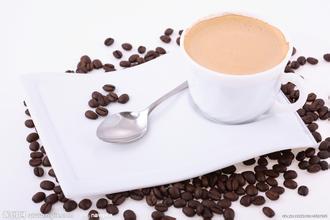A brief introduction to the cultivation of acid-stable Puerto Rican boutique coffee beans, geographical location, climate and altitude

Relevant U.S. government employees, such as FDA and USEA, will also be present at the transaction, and they are here to monitor producers' compliance with federal regulations. There are also professional reviewers who randomly take one bag of coffee from every 50 bags as samples and use international gauges to identify the quality of coffee beans, all in order to ensure the quality of the real Yaocote selected coffee. In Spanish, Puerto Rico means "port of wealth". The history of coffee in Puerto Rico dates back to 1736, when coffee seedlings were brought into the country by early Spanish settlers. In the 18th world, sugar cane was the main economic crop, so little attention was paid to it. At the beginning of the nineteenth century, the French began to emigrate from the Corsica island in the Mediterranean to Puerto Rico because of European politics. Crowded by the Spaniards, many French settled in Yaoke Yauco in southwestern Puerto Rico. Yaoke's geographical environment is more hilly, so the French decided to grow coffee. After half a century of hard work, the quality has been affirmed by the market, which has established the position of Yauco Selecto coffee in the market in the future.
In the 1860s, the coffee produced in the Yaoke area of Puerto Rico won the reputation of high-end coffee and spread all over Europe. At that time, emperors and queens of various countries regarded it as the best coffee, and the kings and queens of many countries and European popes even recognized only Yaoke coffee when they chose coffee. And designated for the Vatican to drink the royal coffee. Puerto Rico, located in the eastern part of the Greater Antilles in the Caribbean Sea, includes Puerto Rico and small islands such as Vieques and Culefra. It is an island with very beautiful scenery. It is bordered by the Atlantic Ocean to the north, the Caribbean Sea to the south, the United States and the British Virgin Islands to the east, and the Mona Strait to the west, bordering the Dominican Republic. Puerto Rico has a land area of 13790 square kilometers, with mountains and hills accounting for 3x4 of the island. The central mountain range stretches from east to west, stretching from the center to all sides, from high to low, and the coast is a plain. The highest peak, Mount Pengta, is 1338 meters above sea level. Belongs to the tropical rain forest climate, the rainfall is abundant, the average temperature in January is 24 ℃, the average temperature in July is 27 ℃. Vulnerable to hurricanes, with an annual average temperature of 28 ℃. These climatic environments are very suitable for the high quality growth of coffee trees.
Puerto Rico, as the "uninhabited territory" of the United States, is rarely heard of, and most people may know that it is a tourist destination rich in Miss World. As one of the few island countries in the Caribbean, the country, known as the "port of wealth" by the Spaniards, had a blank history before Columbus discovered the New World.
Yaoke Yauco is an area of 176.5 square kilometers in southern Poland, named for its production of Tainos, but local residents prefer to call themselves la Ciudad del Caf é (city of coffee) and la Capital Ta í na (center of Tainos). In the 1960s, immigrants from Corsican improved the cultivation of coffee and pioneered the application of flower sticking machines to the process of peeling coffee, making Puerto Rico an outstanding representative of coffee, ranking sixth in the world in terms of production and sales.
The Spanish-American War of 1889 ended with the victory of the United States, ending more than 400 years of Spanish rule over Puerto Rico. The demand for sugar in the United States has increased significantly, while the hurricane destroyed most coffee plantations, and the coffee industry in Puerto Rico was hit hard by natural and man-made disasters.
The national economy of Puerto Rico developed rapidly in the 20th century. Stimulated by the strong support of the government and the expanding demand of the local market, Polish coffee gradually returned to its former elegant demeanor. The Yauco region is internationally renowned for its full Body, creamy and red wine aftertaste and chocolate nut finish.
Higher altitude geographical characteristics, slower maturity, more than 100 inches of annual rainfall, special clay to provide adequate nutrients, the pursuit of taste perfection of old tree species, marine monsoon brought about by micronutrient elements, all aspects of careful handling and monitoring, American standard working environment. For a variety of reasons, Yauco Selecto doubled the price of coffee and coffee cultivation brought them a good return. In the 1860s, they dominated the coffee industry on the island, when Puerto Rico produced the sixth largest coffee bean in the world. The coffee trees planted by Corsican immigrants on the highlands were regarded as a selection, and the origin of Yauco Selecto coffee beans was mainly traced back to this period. However, in 1898, two severe hurricanes hit Puerto Rico. These two hurricanes destroyed the local coffee industry, and farmers had to wait two years to get the crops back to normal. During this period, the United States was very interested in Puerto Rico's sugar production. In addition, European countries no longer impose tariffs on Puerto Rico coffee beans as crops produced in their colonies. Hard hit Puerto Rico Coffee the Caribbean is a warm, romantic and mysterious sea, and a lot of good coffee also revolves around this ring of water. Jamaica Blue Mountains, Dominica, Cuban Crystal Mountains, Puerto Rico Yuko and so on these are the most famous rare and expensive coffee in the world. These island beans make people have a light milky aroma and elegant floral aroma, acidity fine and soft. Although it is still difficult to avoid the problem of easy water loss of coffee caused by the muggy climate of the island, the overall texture is the first-grade beans of coffee. Puerto Rico coffee is not easy to buy on the market mainly because the output is less and mostly exported to Europe. Coupled with the adverse effects of severe weather hurricanes on coffee crops, there will be no coffee to buy for the whole year.
In fact, any kind of coffee will be given a unique flavor because of its origin, just like different music styles will always give you different feelings. Puerto Rico Yaoke coffee has the characteristics of boutique coffee, its acidity is very stable, full of particles, complete flavor, rich aroma. The reason why Yaocote chose coffee beans to be better than other producing areas on the island is that it is grown in high-altitude mountain areas, so it grows slowly and has rich fruit flavor, and it uses ancient coffee tree species, which have a unique flavor despite less yield. this is incomparable to some new tree species. Due to the abundant rainfall, rich soil and high-altitude microclimate zone, Yaoke coffee has all the qualities that gourmet coffee should have. Of course, Yaoke coffee is inseparable from the hard work of those coffee workers, who manage the whole process from planting coffee seedlings to post-harvest treatment.
And each kind of coffee has its own unique taste, when you taste Yaoke coffee, you will feel the unique acidic taste of Central American coffee, which is the most characteristic taste of Caribbean island coffee, so some people compare Yaoke coffee to the coffee with the most attractive tongue, and Jaime Fortuno, the president of Escogido Yauco agency, watches all this work silently every year. Even the smallest details. Fortuno is an investment banker who graduated from Harvard Business School. He was determined to seize every opportunity to open up a market for top coffee in Puerto Rico. He expects a maximum annual output of 3000 bags of 45kg each, less than 1 per cent of the island's total coffee production.
This is why Puerto Rico and Puerto Rico Yukot Yauco Selecto are different. Yukot chooses manor beans. Puerto Rico coffee beans, jointly launched by Puerto Rico San Pedro, Caracolillo and La Juanita, are carefully planted with pure flavor, aroma and heavy granule, and the best coffee is Yauco Selecto, which means "Selecto". Yaocote Coffee is grown only on three farms in the southwest of the island, San Pedro, Caracolillo and La Juanita. It is a truly high-quality coffee with a strong flavor and a long aftertaste. The hills of southwestern Puerto Rico have a mild climate, a long period of plant maturity (from October to February) and high-quality clay. People here have been using an eco-friendly, intensive planting method, picking only fully ripe coffee beans and then flushing them in a drum device for 48 hours. Yaocote selected coffee beans are preserved with sheepskin before sale and will not be removed until order and delivery to ensure the best freshness of the coffee.
Important Notice :
前街咖啡 FrontStreet Coffee has moved to new addredd:
FrontStreet Coffee Address: 315,Donghua East Road,GuangZhou
Tel:020 38364473
- Prev

A brief introduction to the planting Market Price of Puerto Rican Fine Coffee Bean varieties with Pure aromatic granules
There are also professional reviewers who randomly take one bag of coffee from every 50 bags as samples and use international gauges to identify the quality of the coffee beans, all in order to ensure the quality of the real Yaocote selected coffee, and Jaime Fortuno, the president of the Escoki Doryaoke (Escogido Yauco) agency, watches silently every year.
- Next

A brief introduction to the treatment method of grinding degree and baking degree of high-quality Puerto Rican coffee beans with rich fruit flavor
Some old varieties of Arabica coffee beans are grown here, although the yield is lower than other varieties, but generally of high quality. People here have been using an ecological and intensive planting method, using only some low-toxic fertilizers and chemicals, and adopting mixed crop planting measures to make the soil more fertile. When it's time to pick coffee beans, people go back and forth among the coffee trees
Related
- Detailed explanation of Jadeite planting Land in Panamanian Jadeite Manor introduction to the grading system of Jadeite competitive bidding, Red bid, Green bid and Rose Summer
- Story of Coffee planting in Brenka region of Costa Rica Stonehenge Manor anaerobic heavy honey treatment of flavor mouth
- What's on the barrel of Blue Mountain Coffee beans?
- Can American coffee also pull flowers? How to use hot American style to pull out a good-looking pattern?
- Can you make a cold extract with coffee beans? What is the right proportion for cold-extracted coffee formula?
- Indonesian PWN Gold Mandrine Coffee Origin Features Flavor How to Chong? Mandolin coffee is American.
- A brief introduction to the flavor characteristics of Brazilian yellow bourbon coffee beans
- What is the effect of different water quality on the flavor of cold-extracted coffee? What kind of water is best for brewing coffee?
- Why do you think of Rose Summer whenever you mention Panamanian coffee?
- Introduction to the characteristics of authentic blue mountain coffee bean producing areas? What is the CIB Coffee Authority in Jamaica?

